
Recently I published an article on some of the new features of System Center Operations Manager 2016 Technical Preview 2.
Within that list of features, is the integration between Operations Manager (SCOM) and the new Microsoft Operations Management Suite (OMS); formerly called Operational Insight (or Ops Insight for short).
Today, we’re going to explore the Microsoft Operations Management Suite (OMS) in a little more detail. I originally viewed it as “SCOM in Azure” but it’s much more than that.
Let’s start off with the creating of a Workspace.
Azure Operational Insight
First log into your Azure subscription. Once logged in, click on New > App Services > Operational Insight > Quick Create.
In the dialog, select “Create a new account“, and provide a unique Workspace name. Then choose your Tier. Finally, select a Location, and choose subscription to link it to.
Note: As of this writing, the Operational Insight is only available in 2 locations (East US, and West Europe).

Once the account is finished being provisioned, you’ll see that there are several links to help you get started; from monitoring Azure VMs, on-premises servers, or connecting with SCOM.
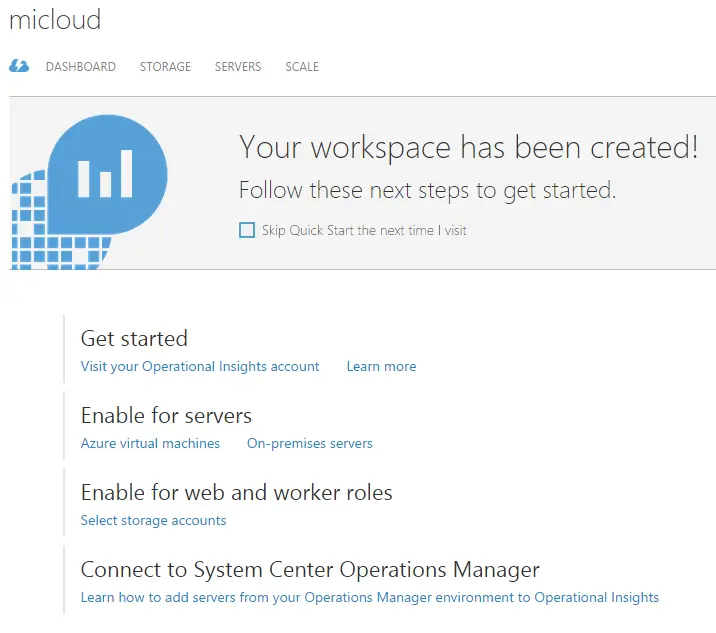
Now that we have our Operational Insight workspace created, let’s walk through the various options listed.
Enable OMS for Azure Virtual Machines
If you have a Virtual Machine (VM) running in Azure, whether it is joined to a domain or not, you can enable it to be managed by OMS.
Log into your Azure subscription, and navigate to the Operational Insights tab.
From there, select the Operational Insights worksapce that you’ve previous created.
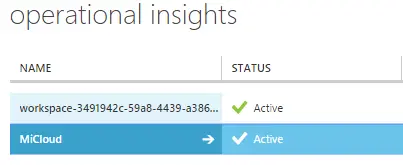
Once you are in your Operational Insights Workspace, click on the Servers tab. From there you should see your Azure-hosted virtual machines.
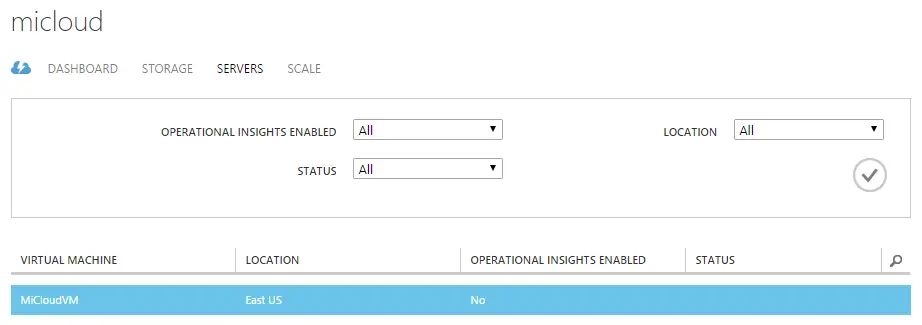
Select your Server, and in the menu bar along the bottom, click the ‘Enable OP Insights‘ button and click ‘Yes‘ to the confirmation prompt.
The Status will change to “Installing”. This will take a while to complete. When it is complete the status will change to “Active”.
After the installation is complete, if you log into the virtual machine and navigate to Control Panel > System and Security, you will see an entry for the Microsoft Monitoring Agent.
If you open the Properties for the Microsoft Monitoring Agent, and click on the Operational Insights tab, you will see that it is connected to your Azure Operational Insights workspace.
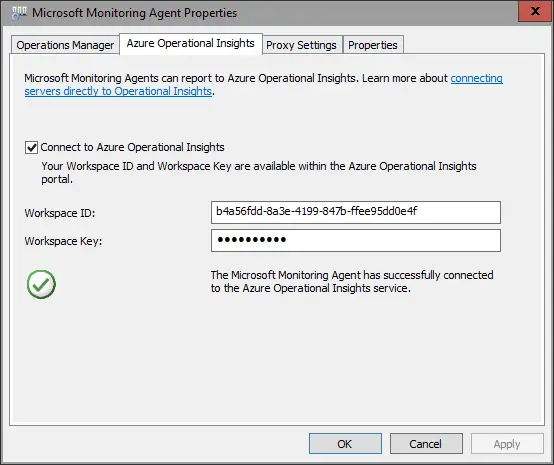
Once this connection has been established, OMS will start to collect data.
Enable OMS for On-Premises Servers
Now let’s try connecting an on-premises server directly to Azure Operational Insights (without the aid of SCOM integration; which is covered in the next section).
Follow the steps that are nicely detailed here: https://azure.microsoft.com/en-us/documentation/articles/operational-insights-direct-agent/
Basically you …
- Log into the OMS portal
- Download the Agent
- Install the Agent using your Workspace ID and Primary/Secondary Keys
One thing I did notice is that while installing the Microsoft Monitoring Agent, there is also an option to connect it to an existing SCOM environment.

Curious if it would show a different Agent version in the SCOM console, I also opted to connect to my on-premises Operations Manager environment.
As you can see in the SCOM console, Version for Agents install via the SCOM console (i.e. Agent Push) is 7.2.10274.0; whereas the Version for the OMS Agent is 7.2.10375.

If we log into the OMS portal, and navigate to Overview > Settings > Connected Sources, we see that it shows 1 server under the Attach Computers Directly column.
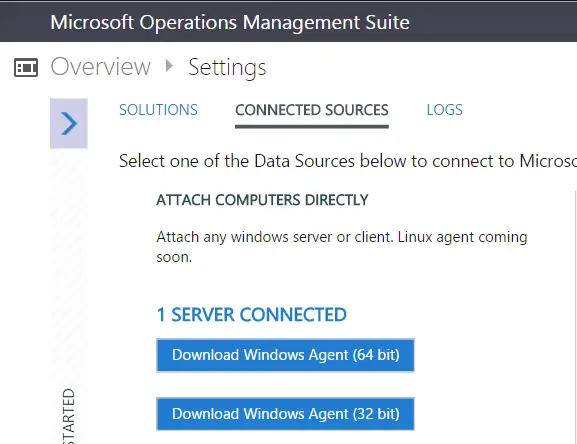
And if you click on the “# Server Connected” link, you should see the server listed.

Once you see your server(s) listed, OMS will start to collect data.
Connect OMS to SCOM
NOTE: I am performing these steps using an installation of System Center Operations Manager 2016 Technical Preview 2.
IMPORTANT: In order to use this feature, your Operations Manager needs to have access to the Internet.
In Operations Manager, navigate to Administration > Operational Insights > Operational Insights Connection.
When you click on the Register to Operational Insights Service link, this will initiate the Operational Insights Service wizard.

On the Authentication screen in the Operational Insights Onboarding wizard, it loads the Microsoft account sign-in page.
NOTE: Originally, I had encountered some issues with getting the Authentication working. See my post on the “First Look at System Center Operations Manager 2016 Technical Preview 2” for further details.
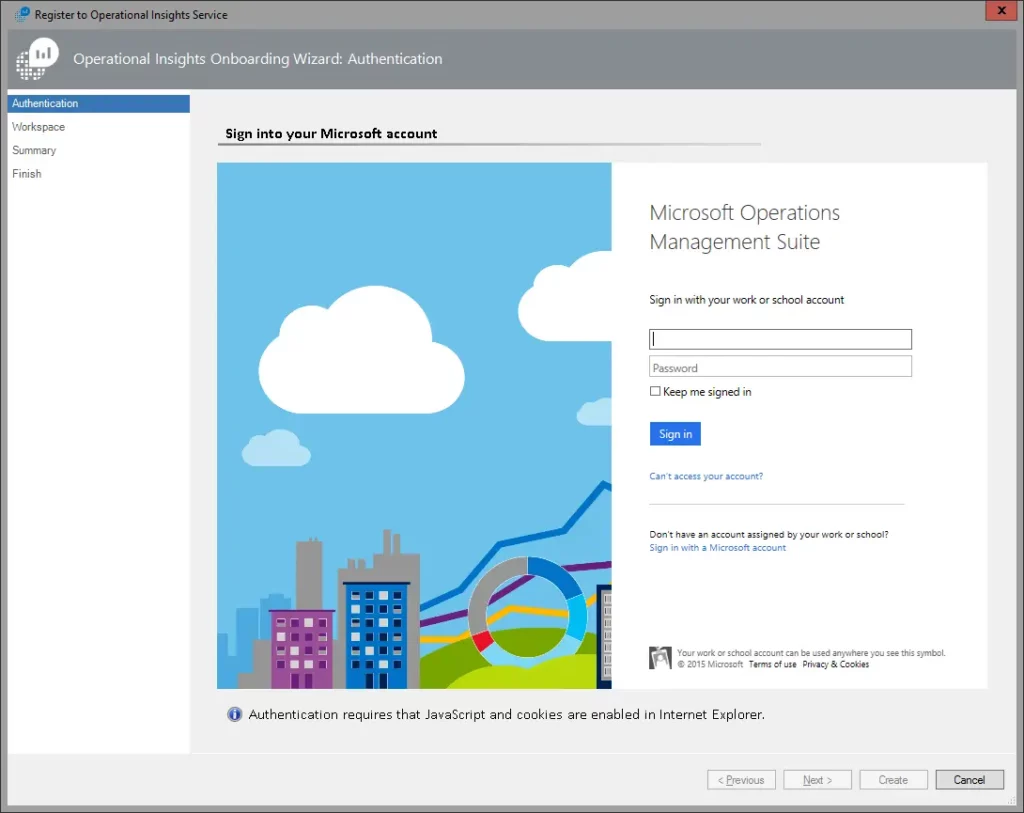
In my case, I’ve logged in with my Microsoft Account (and not a ‘work-based’ account).
Now we are presented to choose the Operational Insights Workspace. We already created a new Operational Insight Workspace previously (in my example I called it “MiCloud”).
Select your Workspace, and click Next.
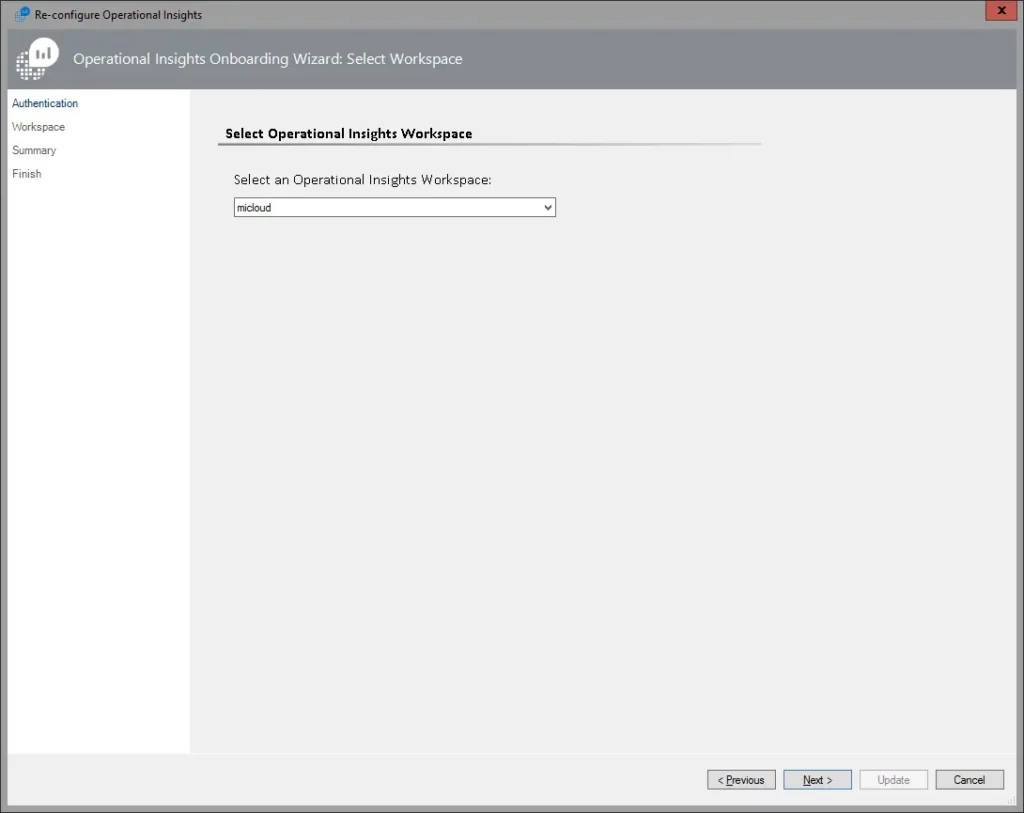
Finally we are presented with a Summary screen, which only shows your login name and OMS Workspace name. Click Create (or Update if you’re changing an existing one, as I am in my example screenshot). Once it is complete, click Close.
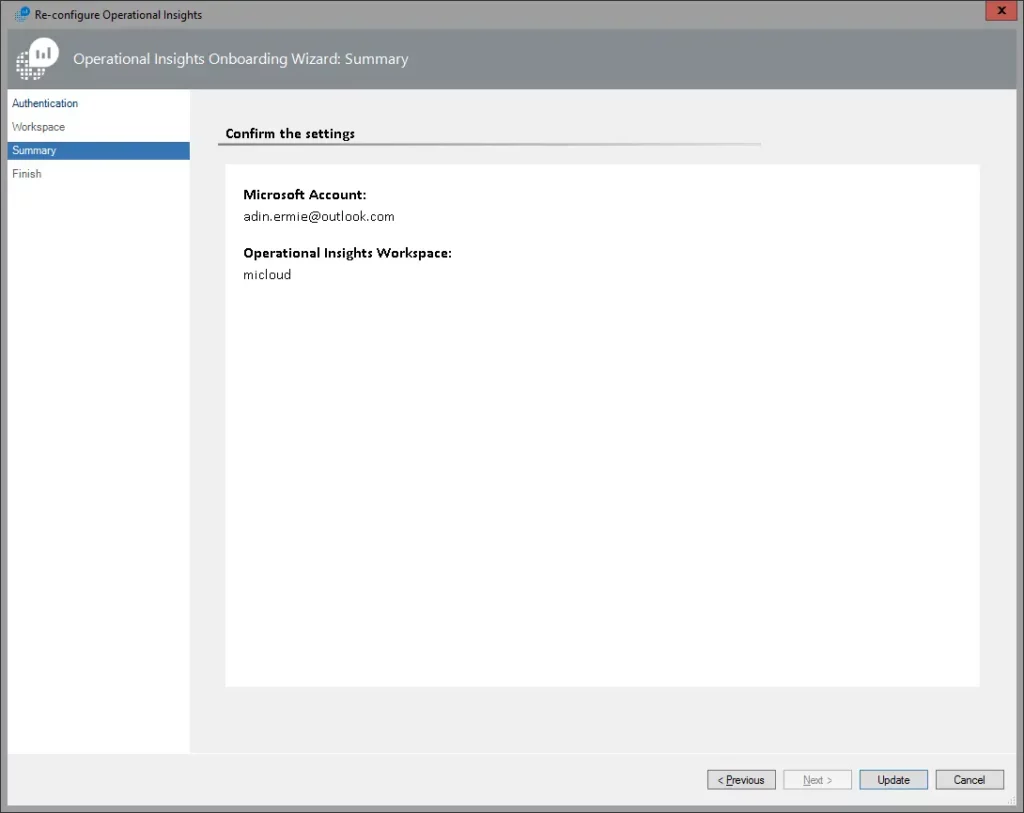
Now that the connection has been created, we can see our SCOM Management Group listed under “System Center Connections” within our Azure Operational Insights’s Workspace dashboard area.
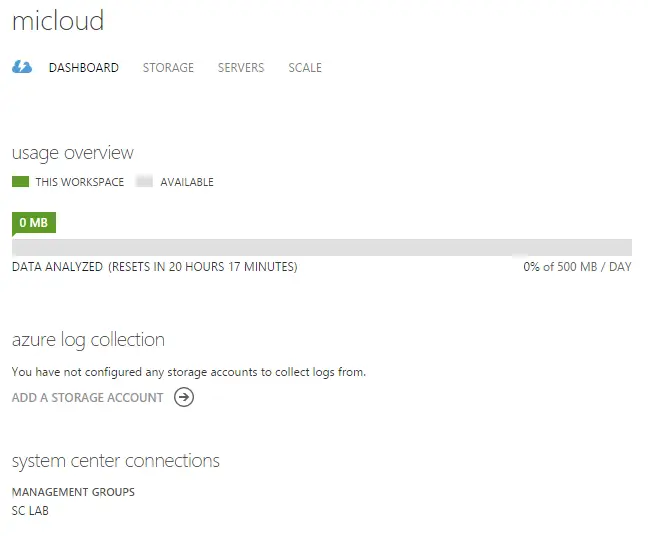
With the connection established and System Center Operations Manager now integrated, we can now click on the “Add a Computer/Group” link to specify which systems we want OMS to manage.
NOTE: This does not mean that the computer selected will no longer be monitored by SCOM.
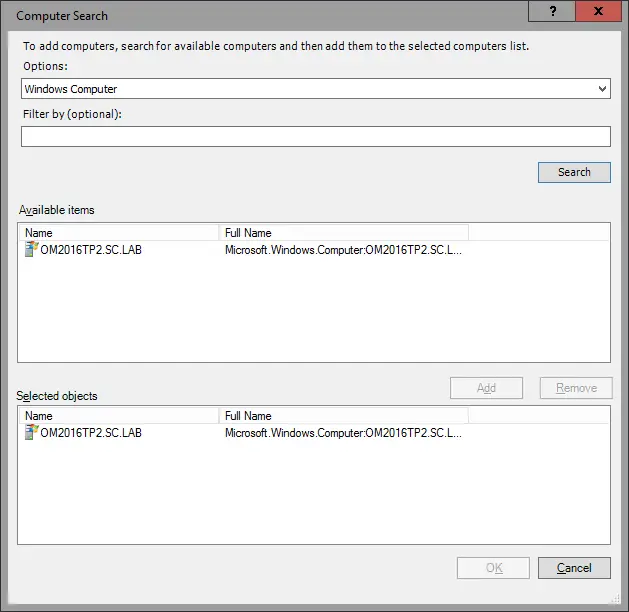
Now we have a computer that is managed by SCOM, and is also configured to send data to OMS for additional analytics and insight.
OMS Portal
But let’s pull all of this together and take a look at the OMS Portal.
So now at this point we have 1 virtual machine running in Azure (which is not joined to my on-premises domain), 1 virtual machine in my on-premises environment (which we manually installed the OMS Agent onto), and finally, we have the SCOM-to-OMS integration configured and have specified in the SCOM console which server(s) we want to send additional data for analysis to OMS.
Depending on if you’ve added any additional Solution than what is provided by default, you will have to wait several hours before enough data is collected and analyzed.
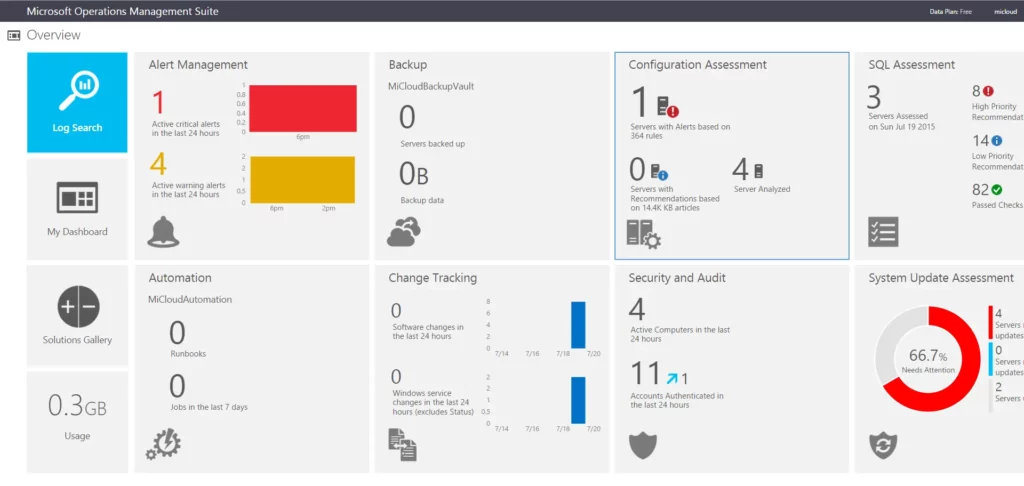
Conclusion
The Microsoft Operations Management Suite (OMS) is much more than just “SCOM in Azure”. It includes (above and beyond just monitoring like SCOM) things such as:
- Active Directory Assessment
- Malware Assessment
- Azure Site Recovery
- Capacity Planning
- Change Tracking
- Configuration Assessment
- Security Audit
- SQL Assessment
And I’m sure additional OMS Solutions will be developed both from Microsoft and third-parties. In fact, one of the OMS Solutions is currently in “Coming Soon” status (as of this writing), called Wire Data, which will help to analyze network traffic.
So for all the SCOM Admins out there, don’t think of OMS as replacing SCOM, or “SCOM in/from the Cloud”, but look at it as a supplement or augmentation to provide even more value and insight for your business.